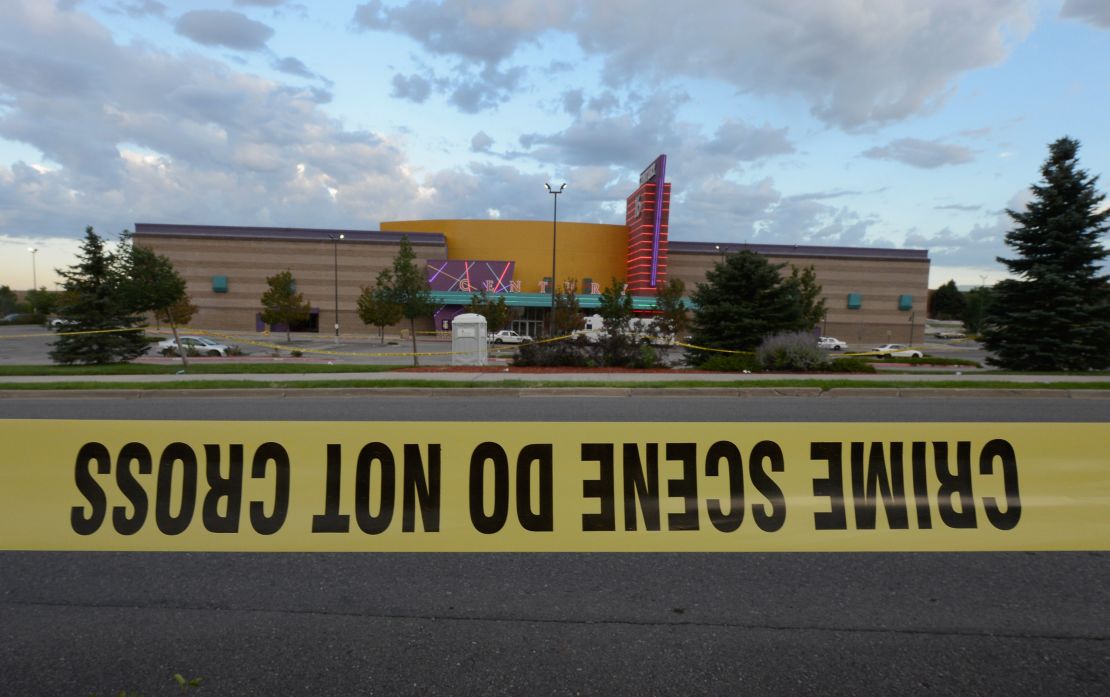Editor’s Note: Dr. Charles Raison, CNNhealth’s mental health expert, is an associate professor of psychiatry at the University of Arizona in Tucson.
Story highlights
Psychosis may play a role in mass shootings
Withdrawal, hallucinations and delusions may be warning signs
Any talk of violence or threats should be taken seriously, expert says
Hospitalizations can short-circuit the danger and get a person in treatment
Senseless mass murder is a thing unto itself, which is almost certainly why it is so hard to identify perpetrators ahead of time and stop the subsequent carnage.
The vast bulk of serious crimes in the United States are committed for reasons that we might not agree with, or might even abhor, but that we can understand. They are committed to get money, or to consolidate power.

Or they occur in the heat of an understandable passion such as anger in response to situations like infidelity that might not lead the majority of us to violence, but that are at least understandable.
Because all these factors are understandable, they make the crimes somewhat predictable. Often crimes occur in high-crime areas and are committed by people with a history of breaking the law. And many – perhaps most – murders occur between people who know each other, and frequently know each other well.
But how would you predict that a quiet young man with no past legal history would allegedly dress up as the Joker and go on one of the largest shooting sprees in American history in Aurora, Colorado? Or that a young man with no past history of violence would shoot a congresswoman and innocent bystanders in Tucson, Arizona? How can we better guard ourselves against crimes that make no sense and come with no warning?
Court appearance fuels theories about Colorado shooting suspect
I don’t have an answer to this hugely important question, but one doesn’t have to share my experience as an emergency psychiatrist to recognize at least two factors that most of the recent mass murders share in common. First, they have been conducted by young men. And second, they were conducted by men who may have become psychotic, although few details are currently known regarding accused Colorado shooter James Holmes’ mental condition.
Because we use the word “psychotic” loosely in common parlance it is worth defining it more carefully here. To be psychotic is to have lost touch with common shared human reality. While this can and does occur in a variety of ways, most people with psychosis struggle with two primary types of symptoms: delusions and hallucinations.

Delusions are fixed false beliefs. Sometimes delusions are wrong, but make sense. But just as often, they are so bizarre that the people afflicted with them cannot explain their ideas in a way that is comprehensible to anyone else.
Hallucinations occur when someone experiences something that is not present, or more technically, that is not experienced by others in the same environment. All the senses are vulnerable to hallucinations, but most hallucinations involve either sight or sound. People see or hear things that aren’t there. Interestingly, visual hallucinations are more common in older people with brain diseases such as dementia, and auditory hallucinations are more common in younger people suffering from psychiatric illnesses such as schizophrenia or bipolar disorder (manic depression).
We know from many studies that the vast majority of individuals afflicted with a psychotic disorder do not commit violence. And I know from much professional experience that people with schizophrenia are, as a group, among the sweetest and most dignified people on the planet. But it is also very clear from studies that people with psychotic disorders are far more likely than others to commit violent acts.
And the great tragedy behind these acts is that they are typically committed by people who may believe they are doing the right thing. Some of the most harrowing experiences of my professional life have involved watching people who had done something terrible when psychotic come to realize the horror of their deeds as they regained their sense of reality through treatment.
Opinion: Looking into the minds of killers
So if we want to reduce the risk of mass murder, a good way to start would be to pay more attention to people who show evidence that they are developing a psychotic disorder and intervene before delusions turn to destruction.

This is no easy task, or we’d be doing it already. But I do believe that even a little public education about what to look for might have measurable effects.
Sometimes it is obvious that someone has become psychotic because he or she says and does things that are indisputably bizarre, such as talking to themselves, espousing clearly strange and untrue beliefs, or not making any sense at all when talking.
But just as often the onset of psychosis is slower and more insidious. In these cases what strikes one is that the person has changed in some fundamental way. This seems to have been the case with most of the recent psychotic mass murderers in the United States.
A person perhaps became more isolated and withdrawn. They began to fall away from their previous level of functioning, as evidenced by things such as dropping out of school. And as is very apparent from photographs, their appearances may change, becoming stranger and more disturbing.
Warning signs from a troubled mind: what parents should do
Again, it is important to emphasize that most people who demonstrate these types of changes will not go on to commit violent acts, but it is still true that these changes are a fingerprint of risk for mass murder. Given this, we’d do well to take them more seriously, as individuals, families and as a society.
Because these people do not engage in behavior that results in psychiatric hospitalization or arrest, they are currently ignored by the system. And because of basic American liberties, they are protected from detainment or incarceration based on suspicion alone.
So if we are to become better at stopping tragedies such as the recent shooting in Aurora, it falls to us as individuals to be more aware of acquaintances, friends and loved ones who begin showing signs of psychosis.
Spoken threats of violence, or indications that a person is preparing for violence, should always be taken with utmost seriousness. But this is even more true for people who are showing signs of psychosis, because – sadly – their delusions may give them a sense of urgency and depth of commitment that make violence much more likely.
Police: Evidence of ‘calculation,’ ‘deliberation’ in Colorado shooting
Sometimes people who are planning violence for psychotic reasons are secretive. But just as often, they will tell you what they are planning to do if you ask them. For this reason, it is well worth checking in with psychotic individuals on a regular basis to ensure that their disease is not driving them into danger in this regard.
If we have a friend, loved one or family member who has become psychotic, it is also well worth taking a quick peek into their current living environments, mostly to make sure they are adequately caring for themselves, but also because very occasionally such an inspection will turn up signs of danger. A quick look through the belongings of any of recent psychotic shooters a day or two before their killing sprees may have found ample evidence of impending mayhem.
If we hear or see signs of danger, it is of utmost importance that we act. Although the mental health system in the United States often fails both patients and society, it is still the case that in most states people can be hospitalized against their will when there is clear evidence either from their words or deeds that they intend to commit violence.
In my experience, such hospitalizations can often short-circuit the danger and get people into much-needed treatment. Of course, this is not always the case. But it is the best we can do, and it is a lot better than nothing.





